I’ve been suffering woods withdrawal, I’m yearning for a dose of the green stuff. It seems like such a long time since we ventured more than a few miles from home to go for a walk in the woods. So I’ve been scouring the archives for unposted photos, stashed away overlooked down the back of the sofa or hidden in the depths of a forgotten rucksack. Epping Forest has been out of bounds because of COVID-19 restrictions, but I managed to find a few photos we took earlier, before lockdown.
Beginning with a quick tour of the Barn Hoppitt oaks.
It’s February as I write these words but it will be spring before I post them back to summer last year when we were free to go walking in the woods.
On the edge of Warren Pond there’s a special tree with a cave in its roots, almost always occupied by a small child. And I remember when I did the same thing, but I have to pretend I’m not interested, circle around looking at other trees until it becomes vacant and I get a chance to poke my nose in.
It reminds me of a cave in a similar tree on the banks of the River Hodder, where we picnicked and paddled, and I slept in its roots and sang on its roof.
It was also the inspiration for fantasy novelist Vincent G Learoyd –
The Laila Mythology is based on trips the author used to take with his daughter to Warren Pond in Epping Forest, and an old oak tree which she used to climb inside which leads to another world in the novel.
Penny Rimbaud & The Laila Mythology
Nature is an excellent place for play and education. From the physical agility and resilience developed by climbing trees, to the innovation of building camps, to learning the names of trees, birds and butterflies, the forest offers children so many ways to grow.
Children who spend regular time in nature on average experience an increase in self-confidence, problem-solving skills, motor skills and the capacity to learn.
Developing an early appreciation of nature sets up a positive relationship for life, so that nature will continue to be a source of relaxation and connection throughout adulthood.
Even children are feeling the effects of today’s modern world, with rates of depression and stress among young people increasing rapidly. Increased pressure to study and the rise in use of technology such as smartphones are leaving our children feeling frazzled. Time in nature is just as valuable to children as it is to adults.
Yoshifumi Miyazaki: Walking in the Woods
Barn Hoppitt is a small corner of the forest, a triangle enclosed between two roads, Forest Side and Rangers Road, and The Ching, a meandering brook, a tributary of the River Lea. It preserves the appearance of medieval wood pasture, with ancient oak pollards and a carpet of grasses, but without the cattle to graze it. Cows once wandered freely here, and through many parts of the forest there had been a right of common pasture for hundreds of years. But it ceased in 1996 with outbreaks of BSE (Mad Cow Disease) and Foot & Mouth Disease. Tourists also once wandered freely here, arriving from London in charabancs to holiday at the Royal Forest Hotel, a mock Tudor resort built alongside Queen Elizabeth’s Hunting Lodge.
Another retreat at Chingford was Butlers. This was opened in 1891. Prior to that date a Mrs Harriet Watkins, whose son was a Forest Keeper, lived in Queen Elizabeth’s Hunting Lodge and used the Lodge and its garden for the provision of teas. As the Lodge was to be open for inspection by visitors to the forest it often happened that the press of those taking teas in the Lodge precluded the admission of sightseers and in 1887 Mrs Watkins took over the adjacent barn for the provision of teas. The barn had earlier been used as a shelter for school parties in adverse weather conditions. On 8 November, 1890, Mrs Watkins vacated the Hunting Lodge and John Butler, who earlier had operated a kiosk on the forest, took a lease of the barn from 1 January, 1891. In the 1894 edition of Kellys Essex Directory, J Butler is described as “refreshment contractor and tea gardens, Epping Forest, overlooking Connaught Water and adjoining Queen Elizabeth’s old hunting lodge – seating room for 600 – Butlers Retreat”.
This remained in the hands of the one family throughout. It was taken over by his wife, Mrs Hannah Butler, at Christmas 1903. On 30th January 1907, the building was damaged by fire but was repaired. In the 1920s David Butler (her son) took over and finally in 1956 David Butler’s daughter, Mrs Marjorie Owen of Theydon Bois continued the business. The licence was given up in 1971 and the lettering over the door which read “Butlers Retreat” removed.
Bernard Ward: The Retreats of Epping Forest
Fortunately Butlers Retreat reopened in 2012 and in more normal times it’s where we often get breakfast, and Barn Hoppitt is our entrance to the forest. But today the tea hut was closed and the forest felt out of bounds. So we confined ourselves to the entrance, and we were entranced by the trees we found there, often overlooked in our haste to get deeper into the forest.
But this one’s an old friend. This fantastic fan-shaped oak is by the car park and I see it often. I know it as the tree that points in all directions at once. It’s also known as the Tesla Tree. It’s one of my favourite trees in the forest.


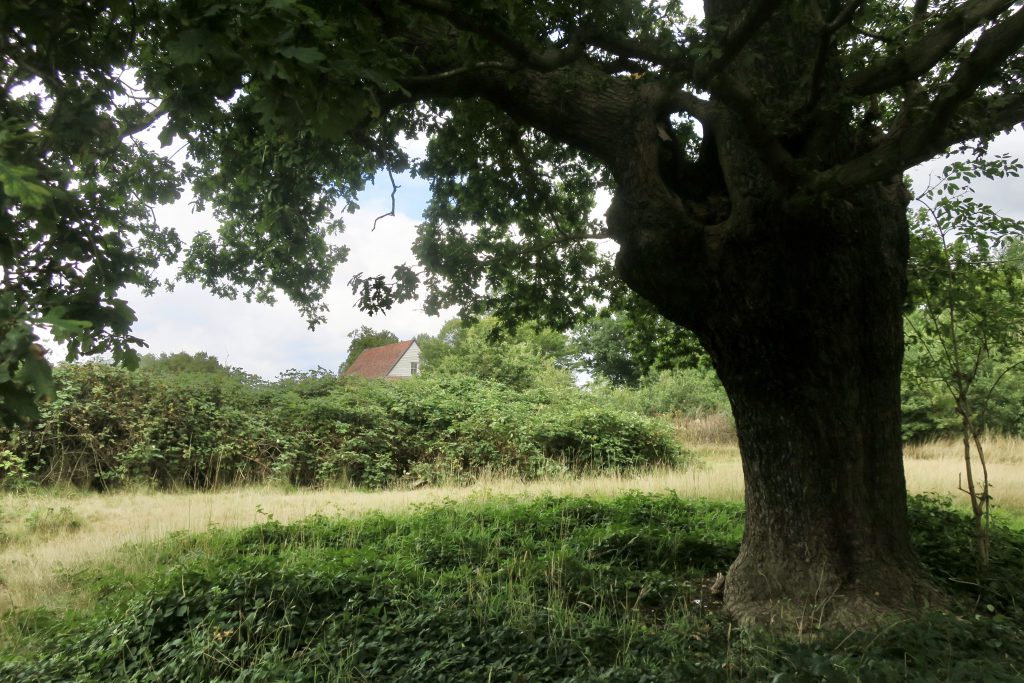
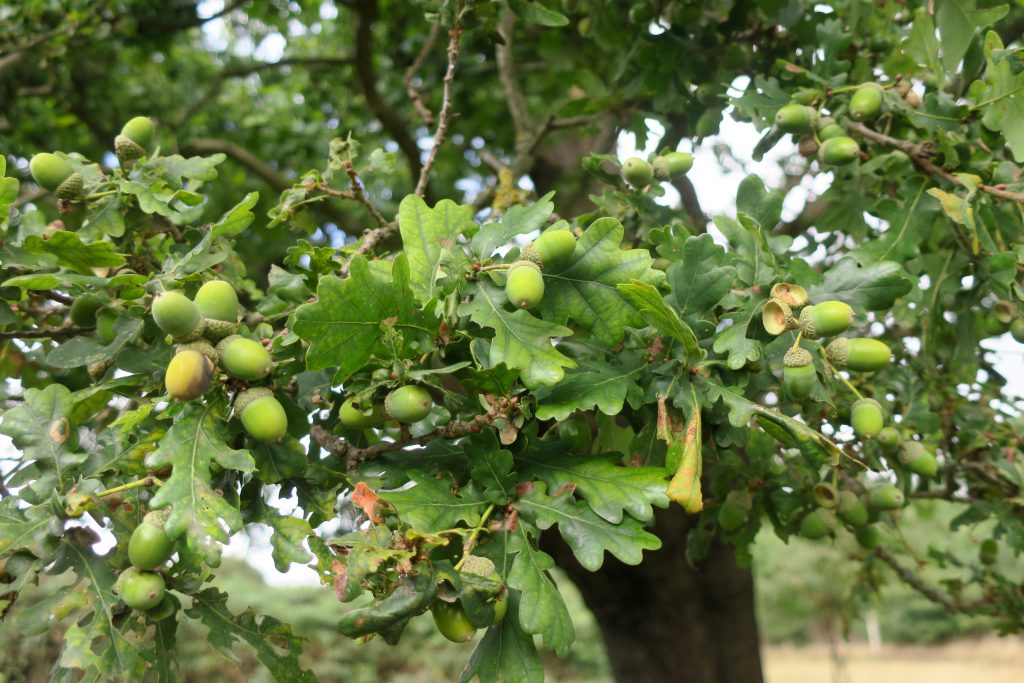
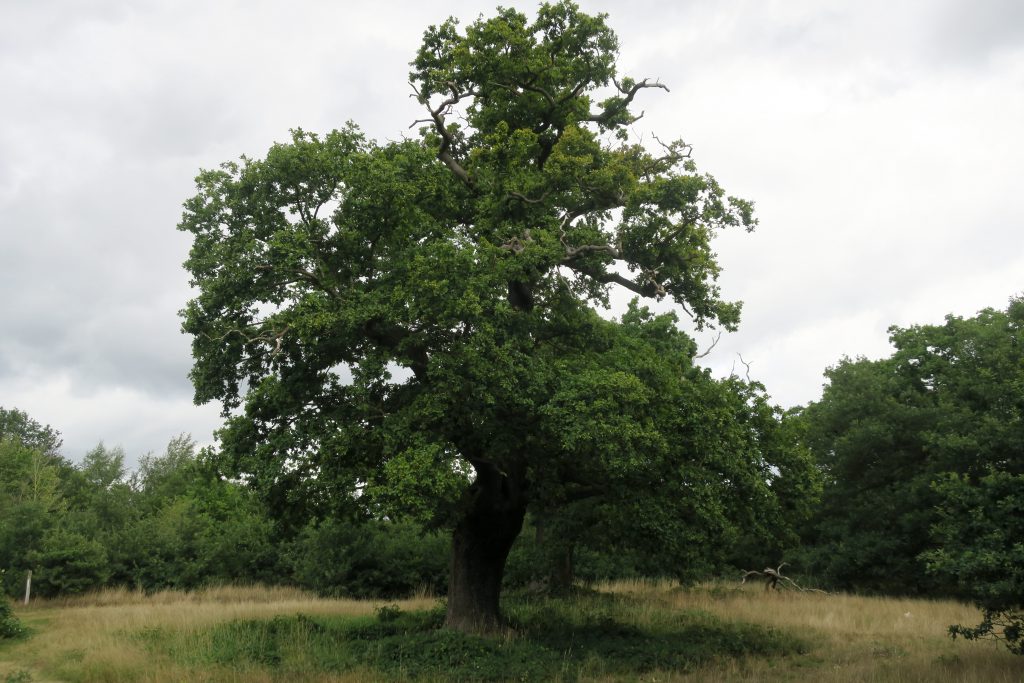
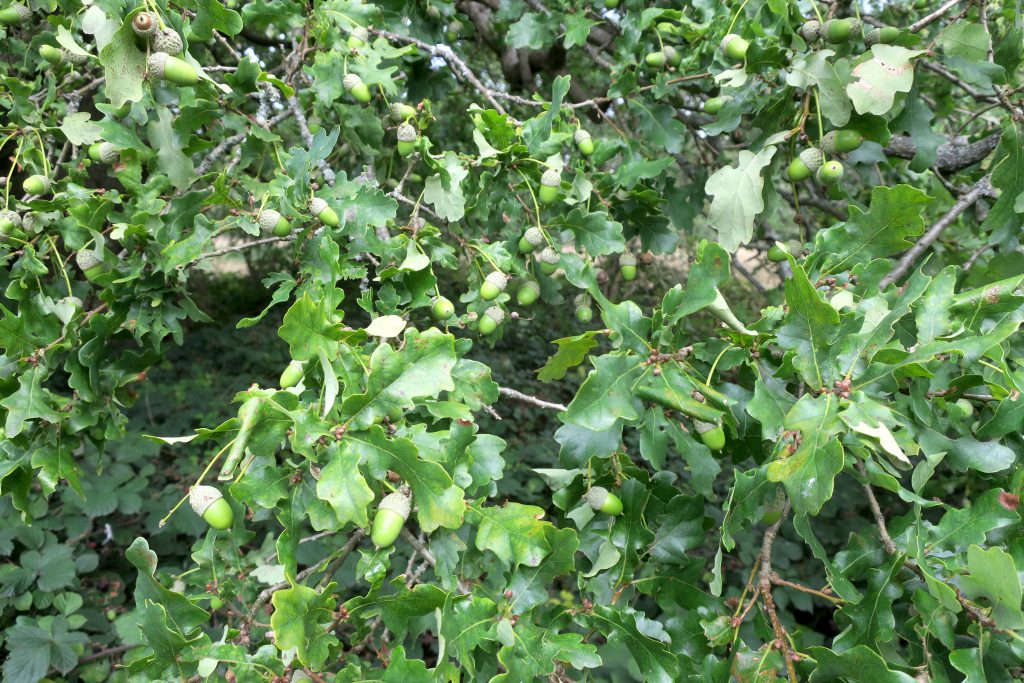
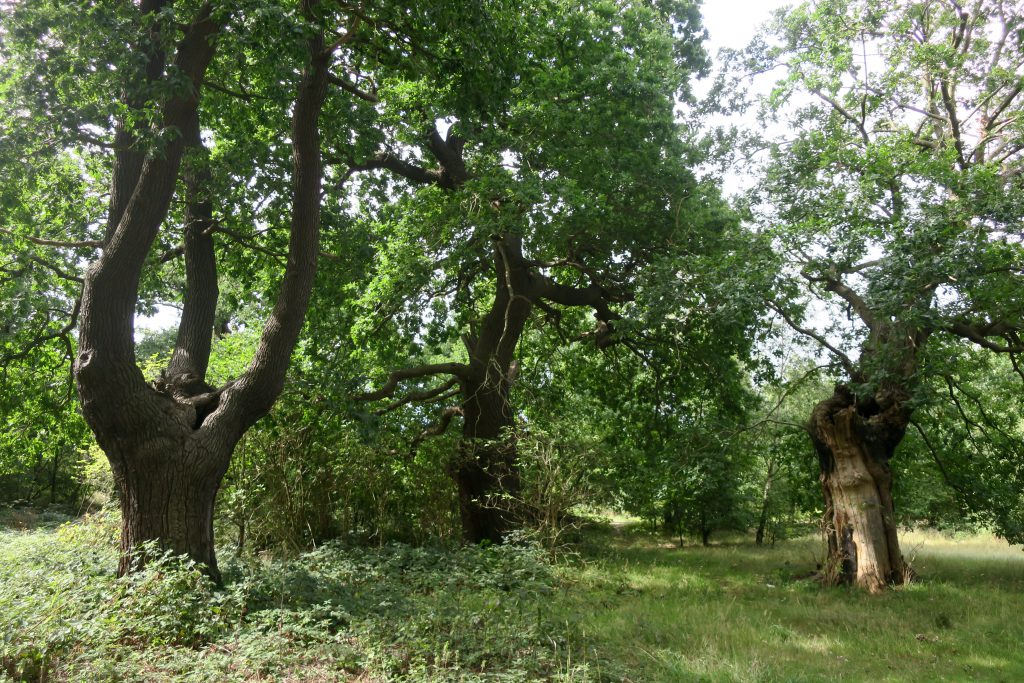
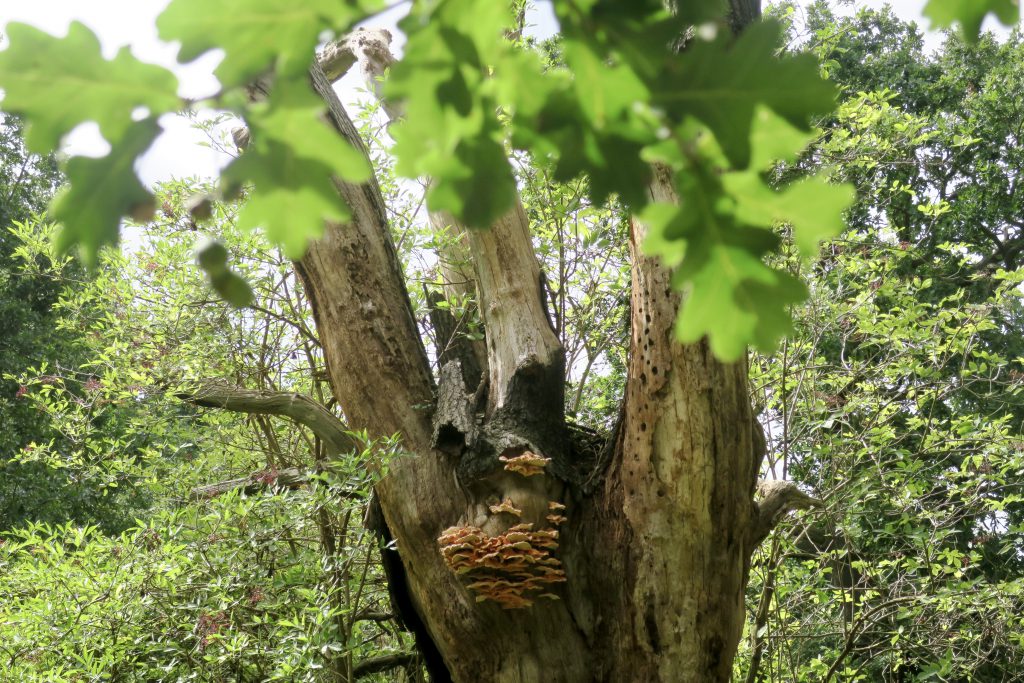
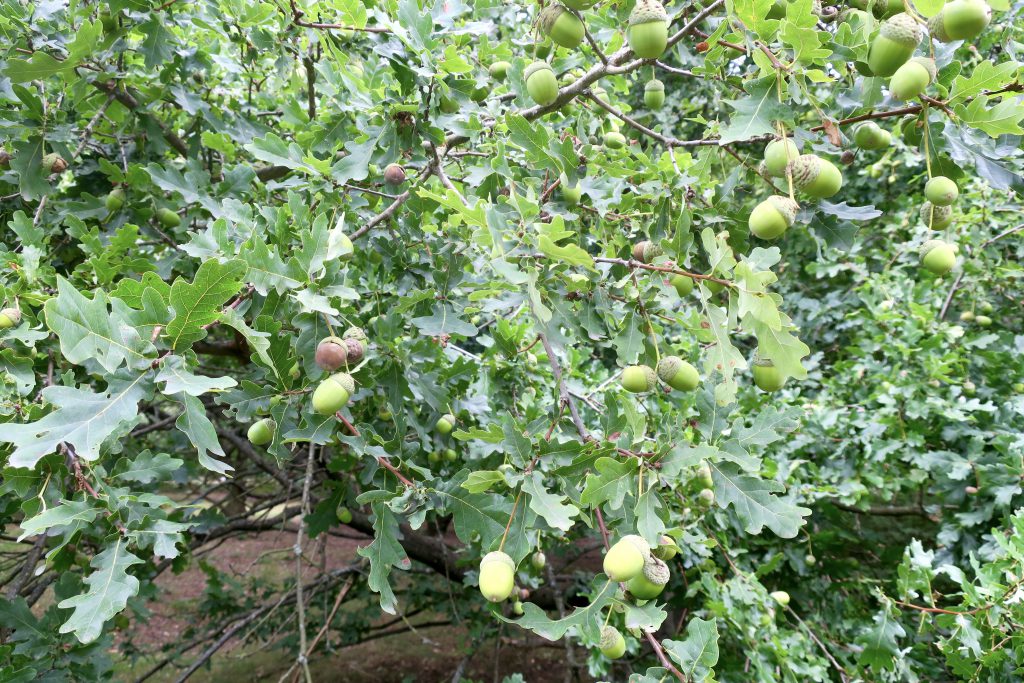
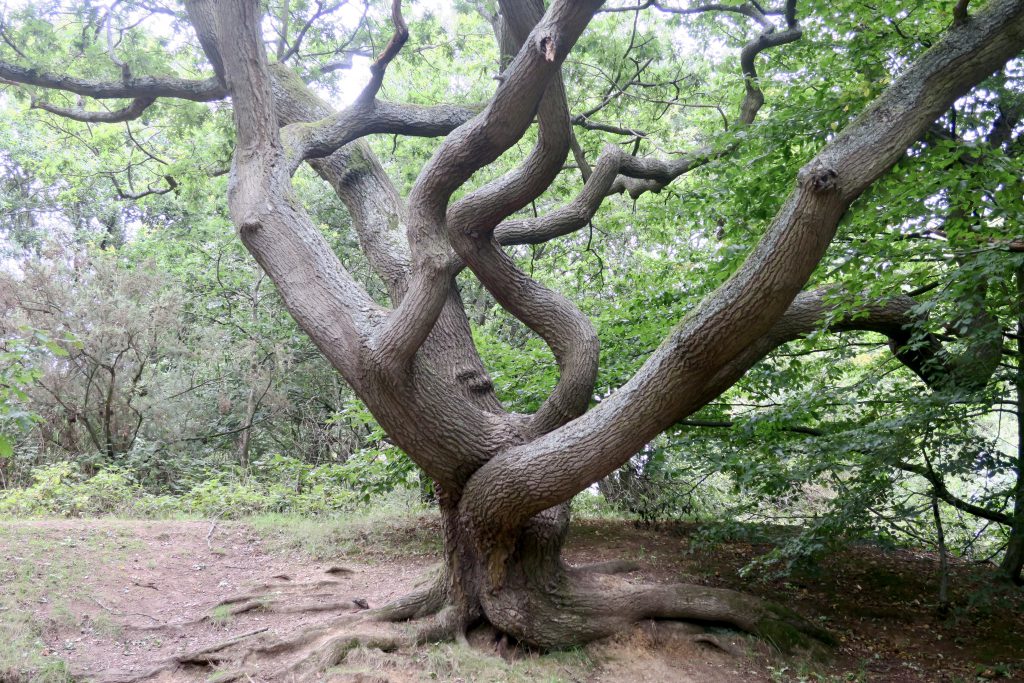
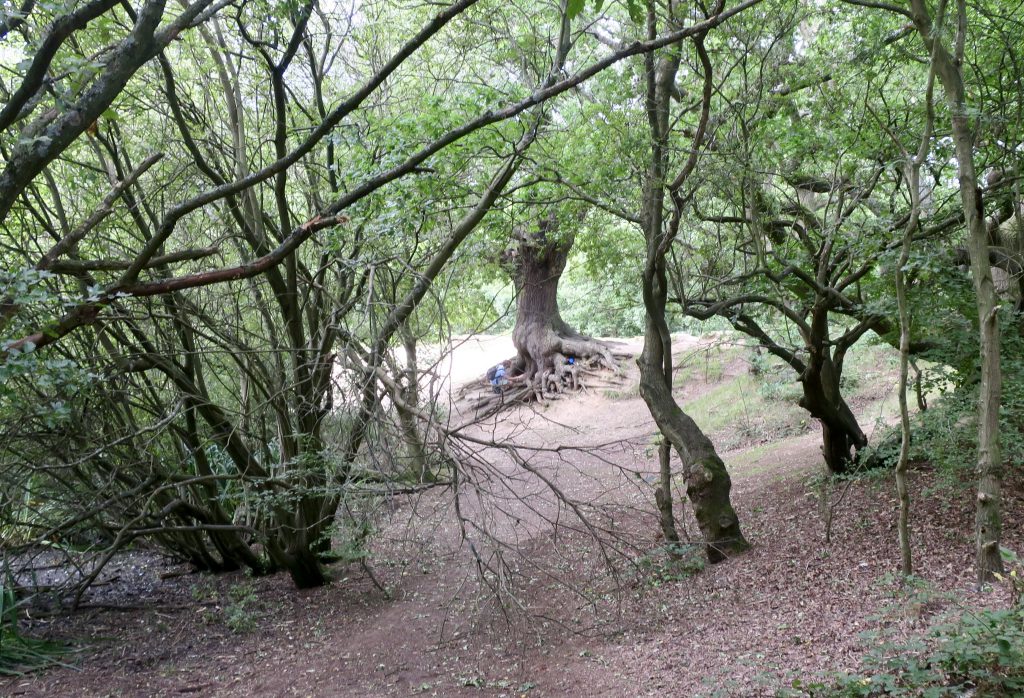
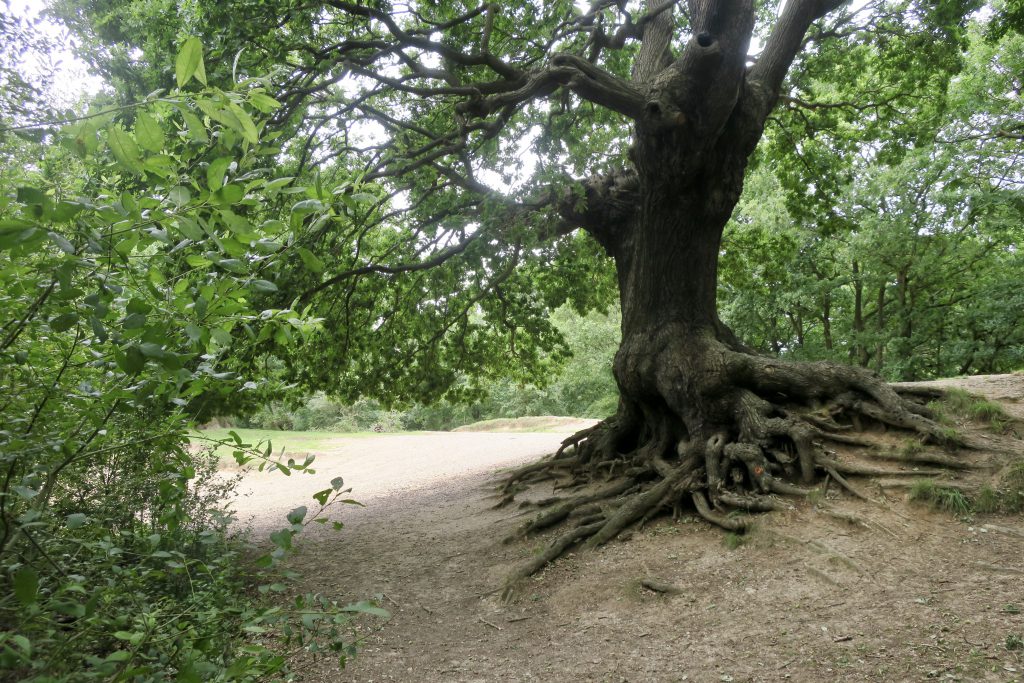
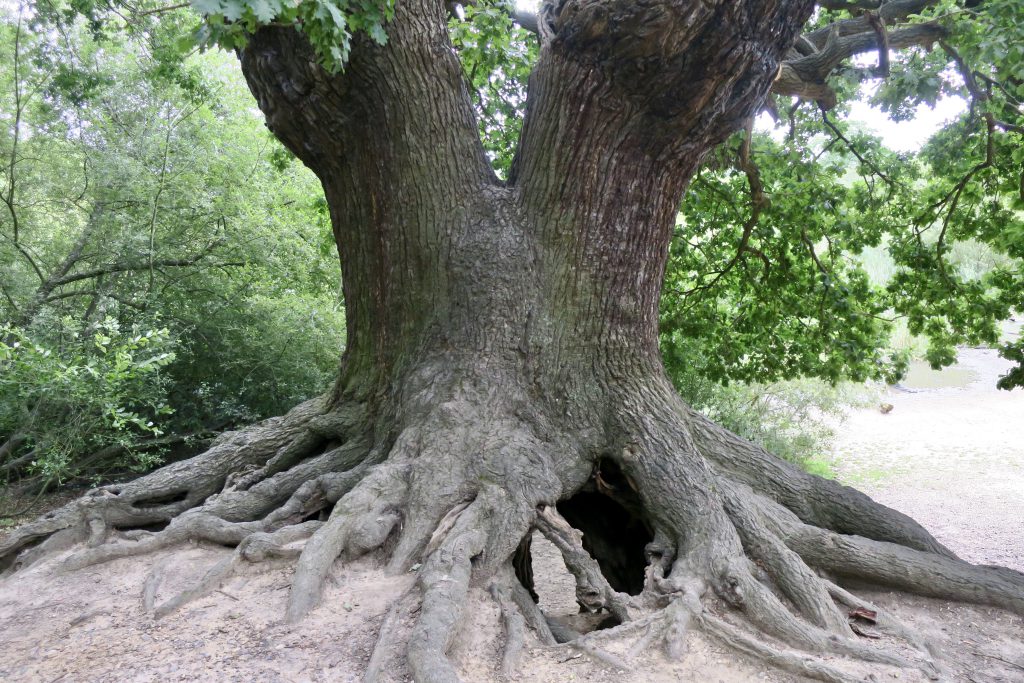
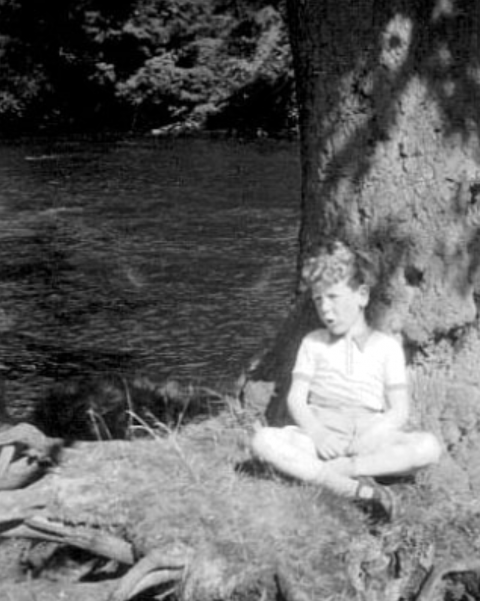
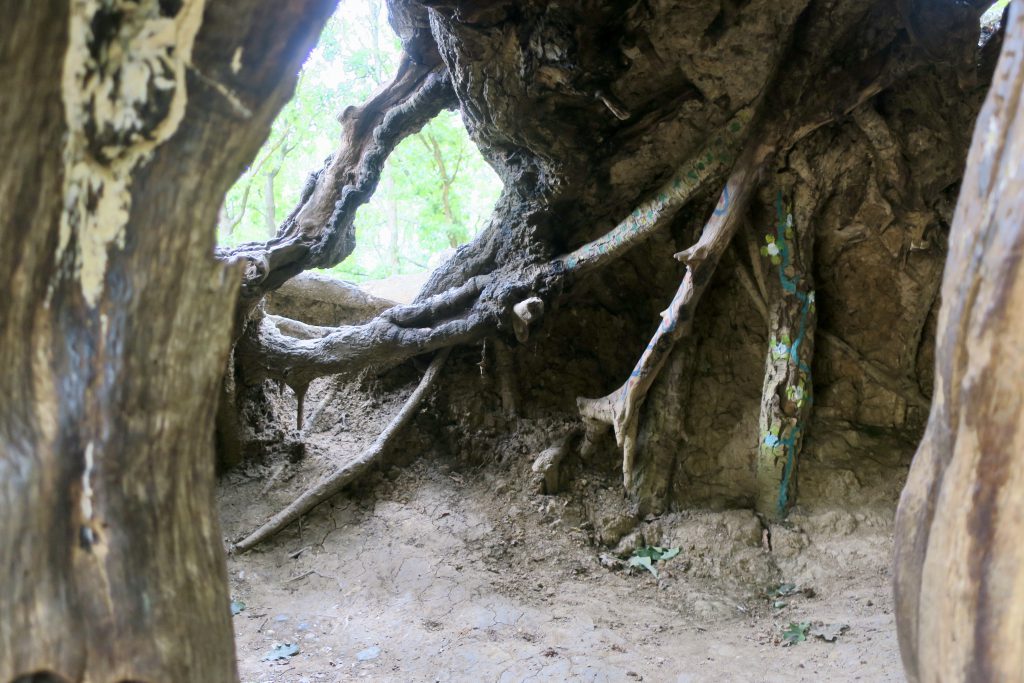
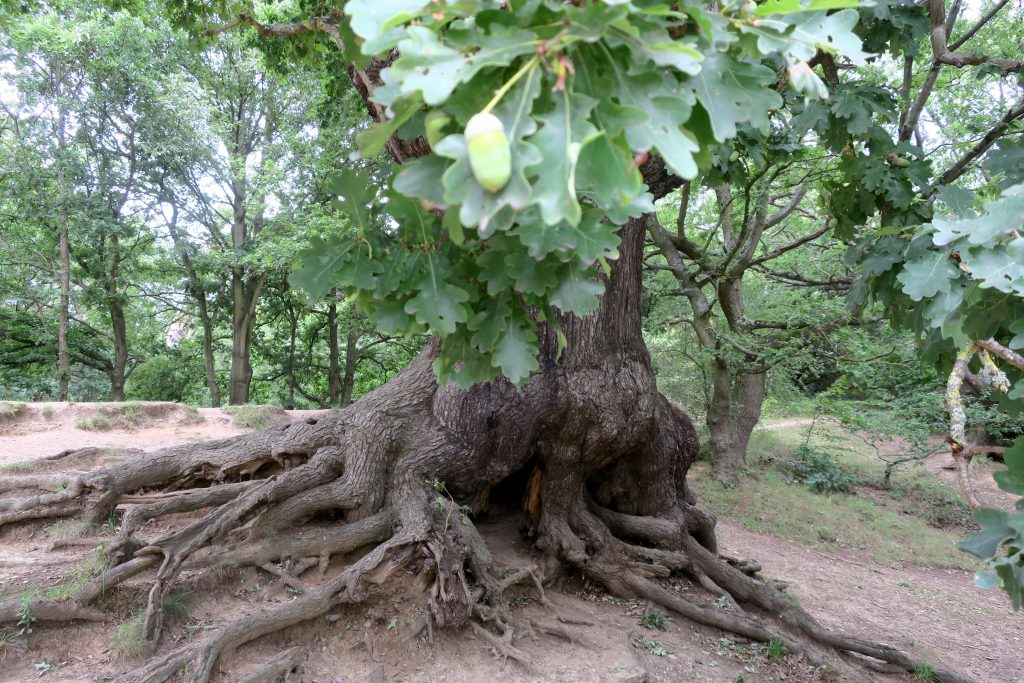
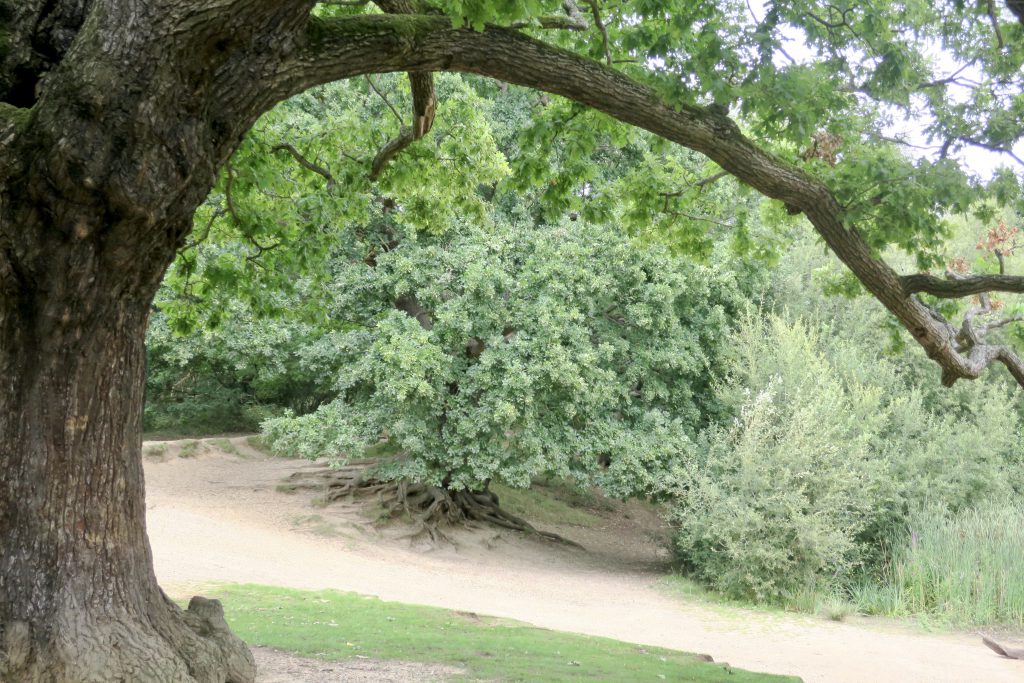
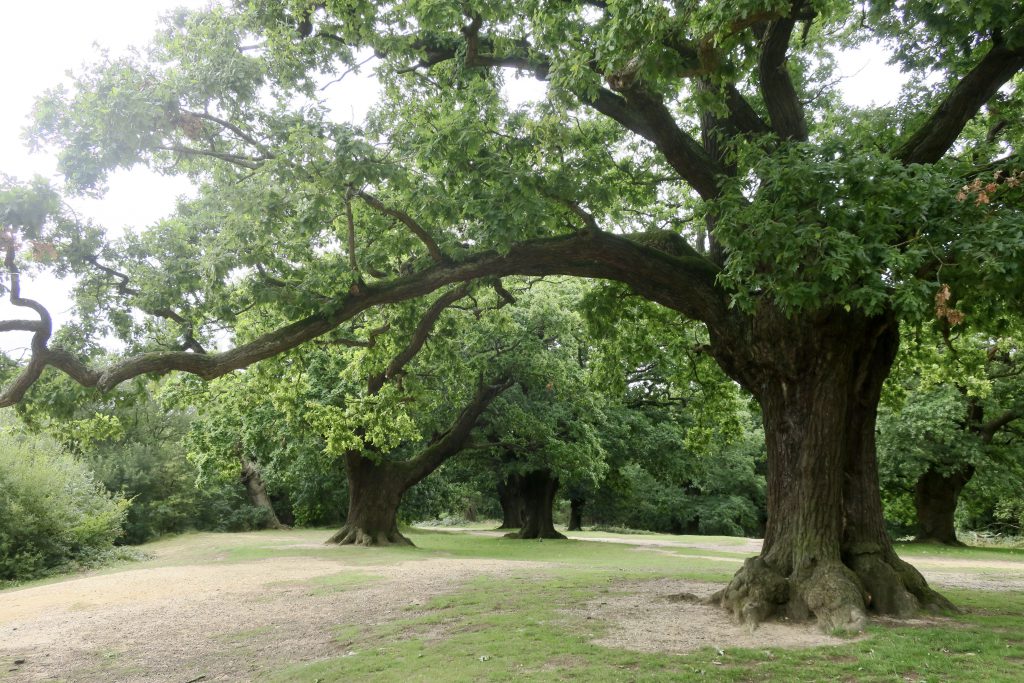
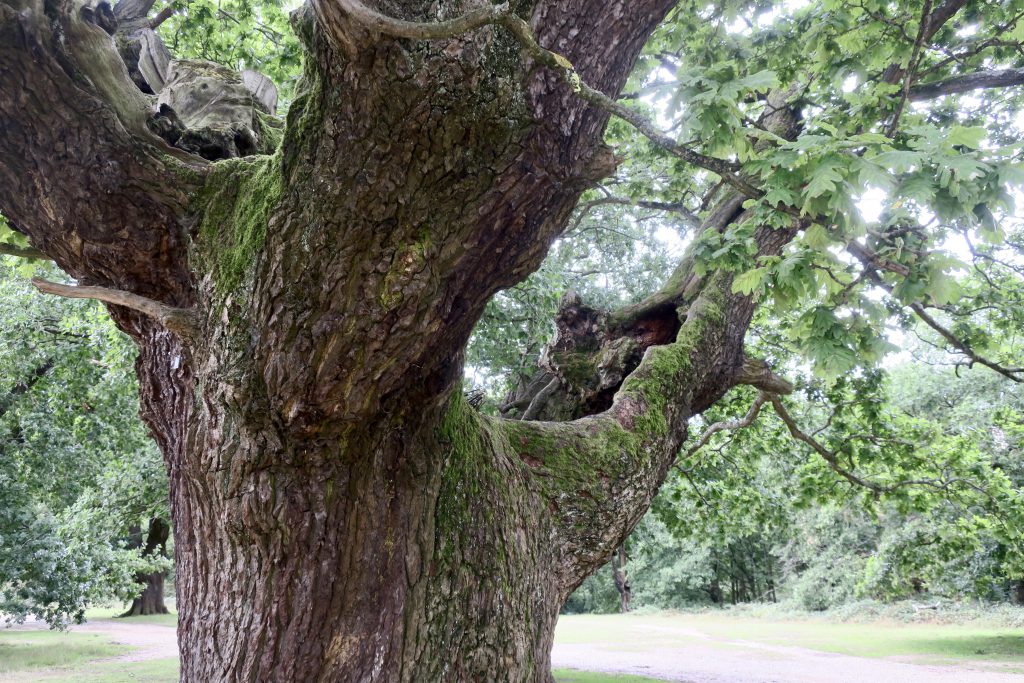
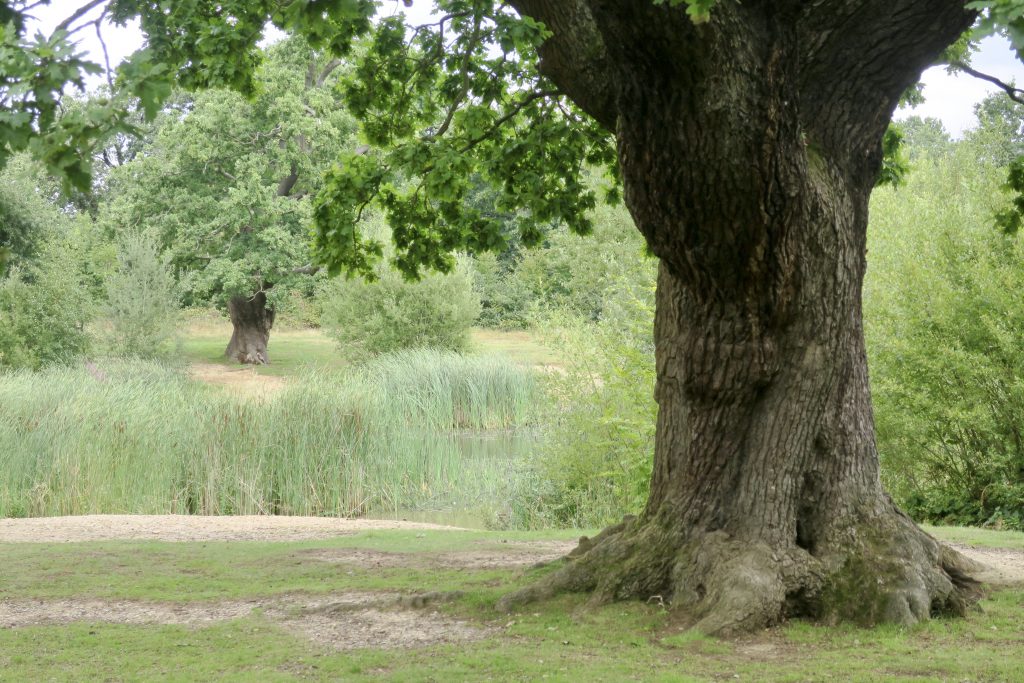

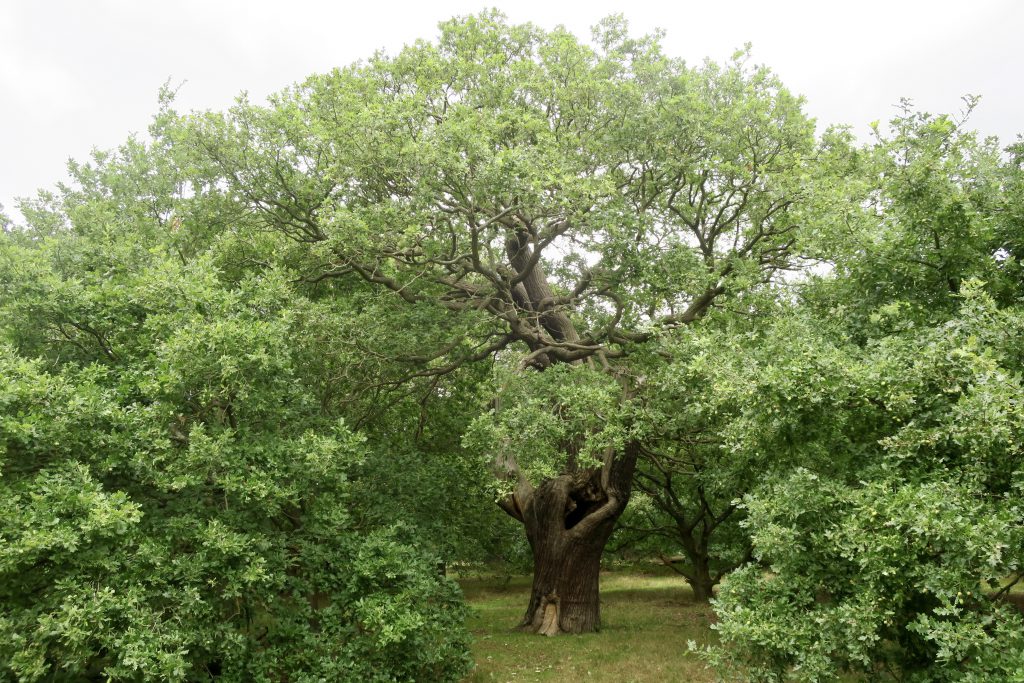
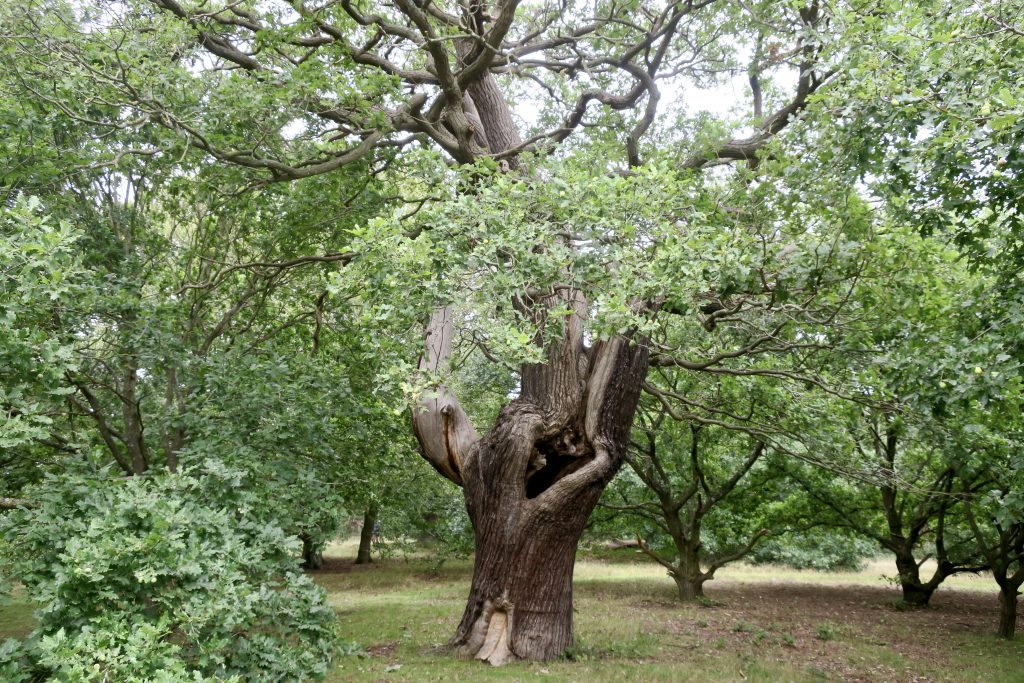
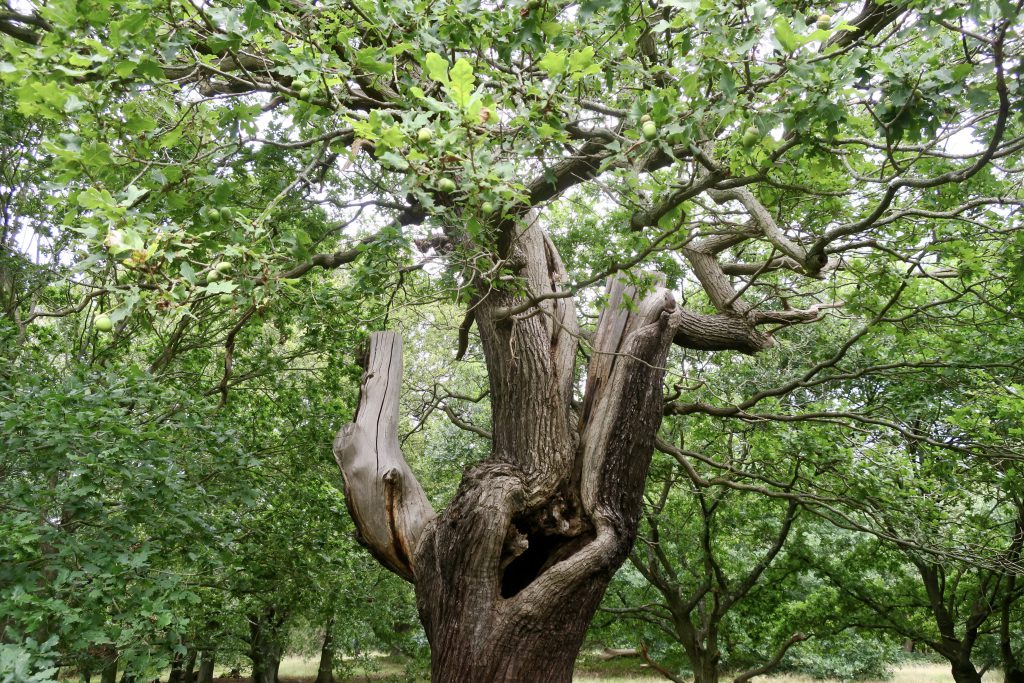
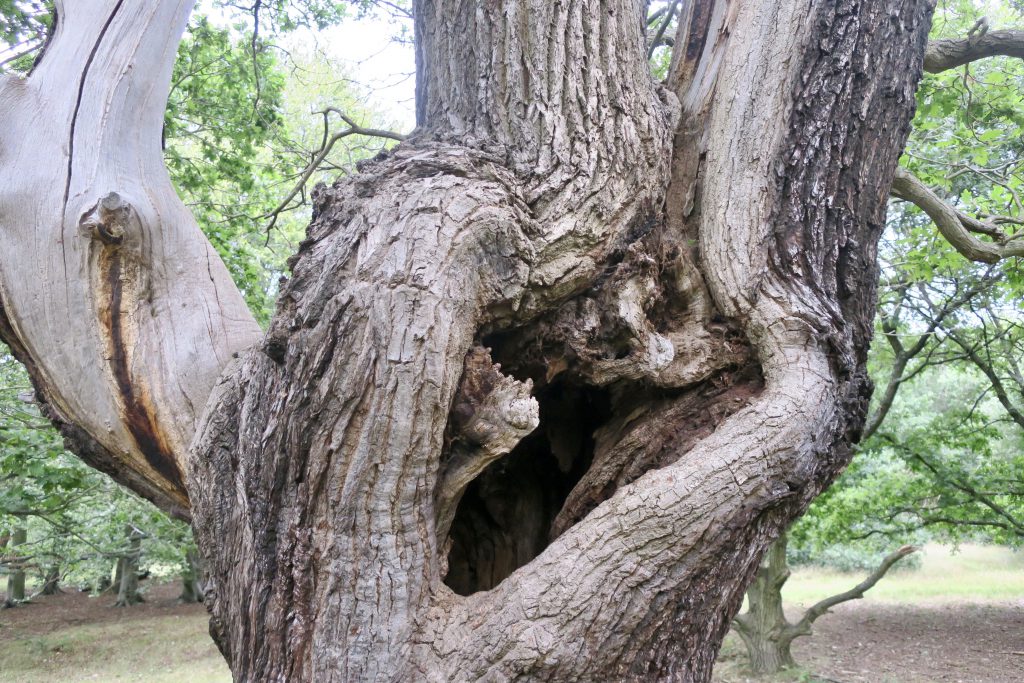
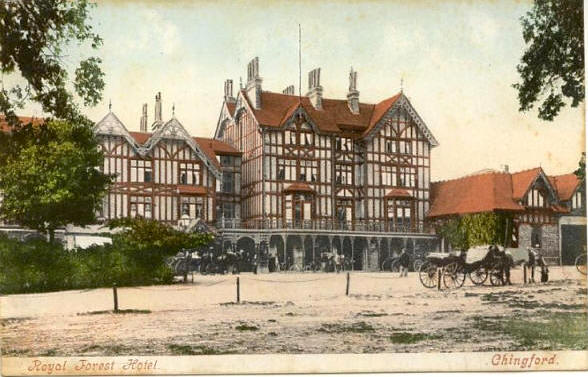
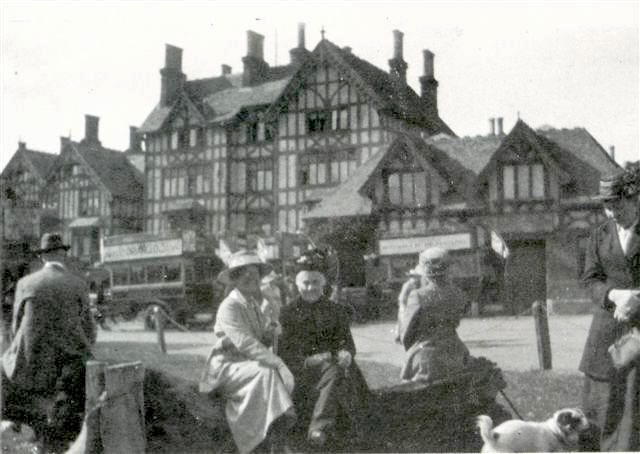
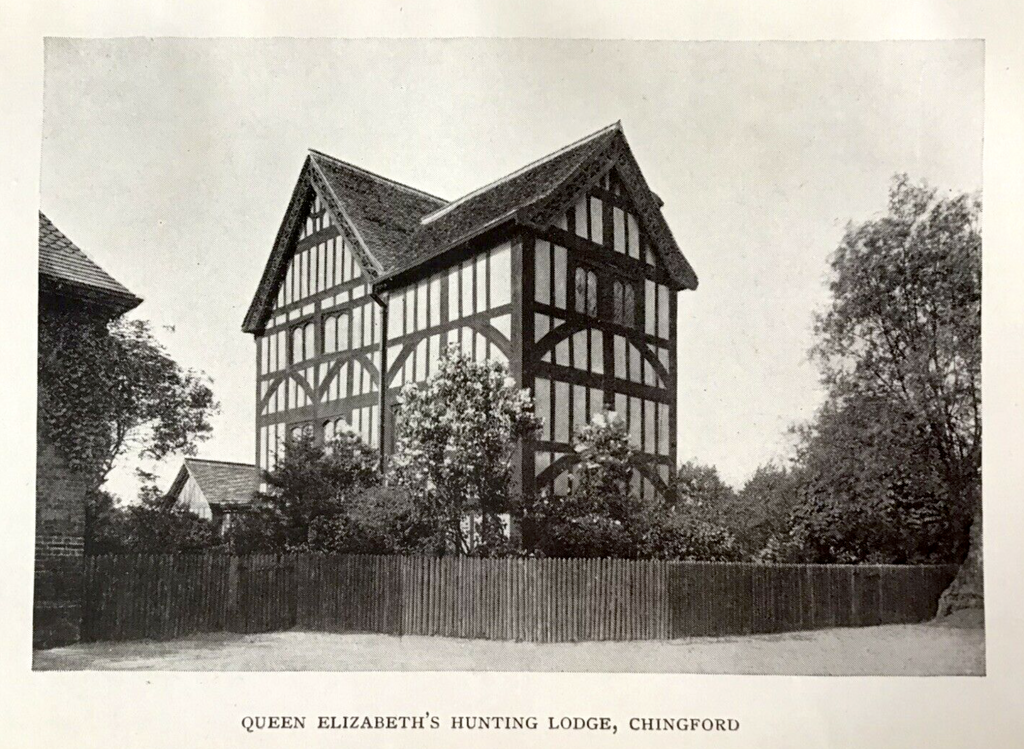
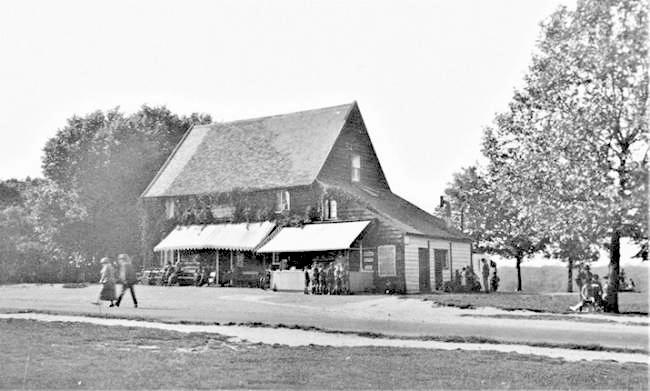
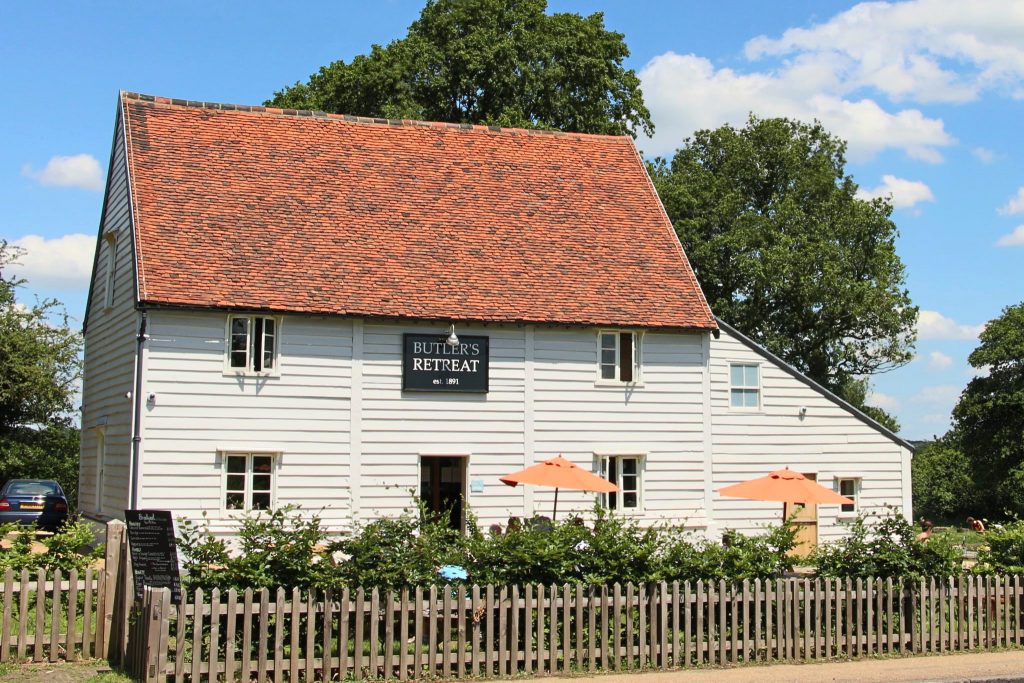
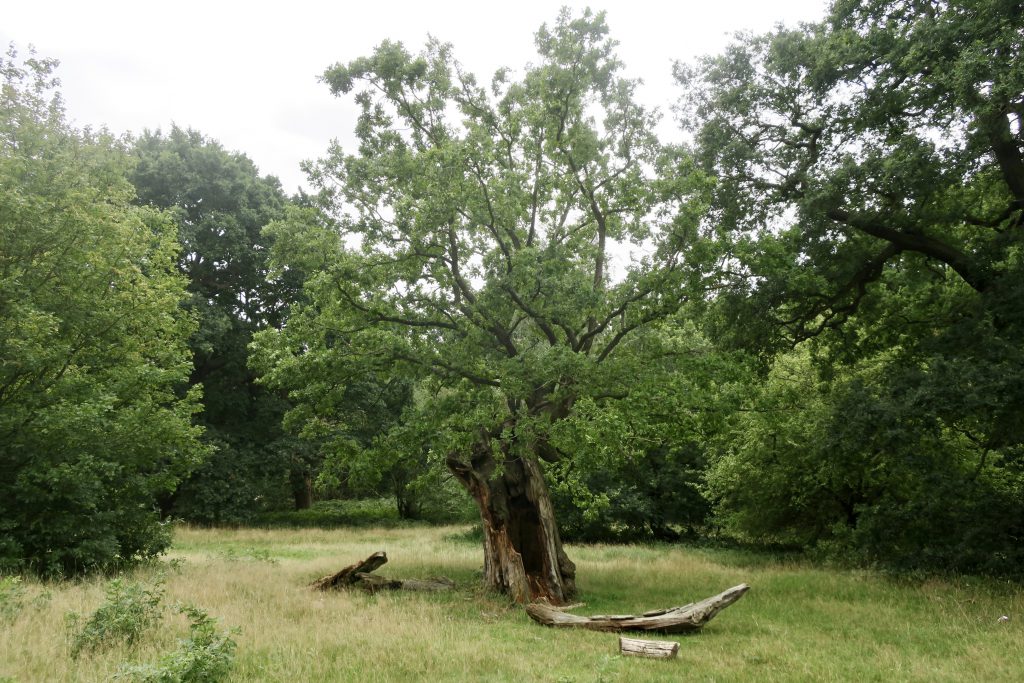
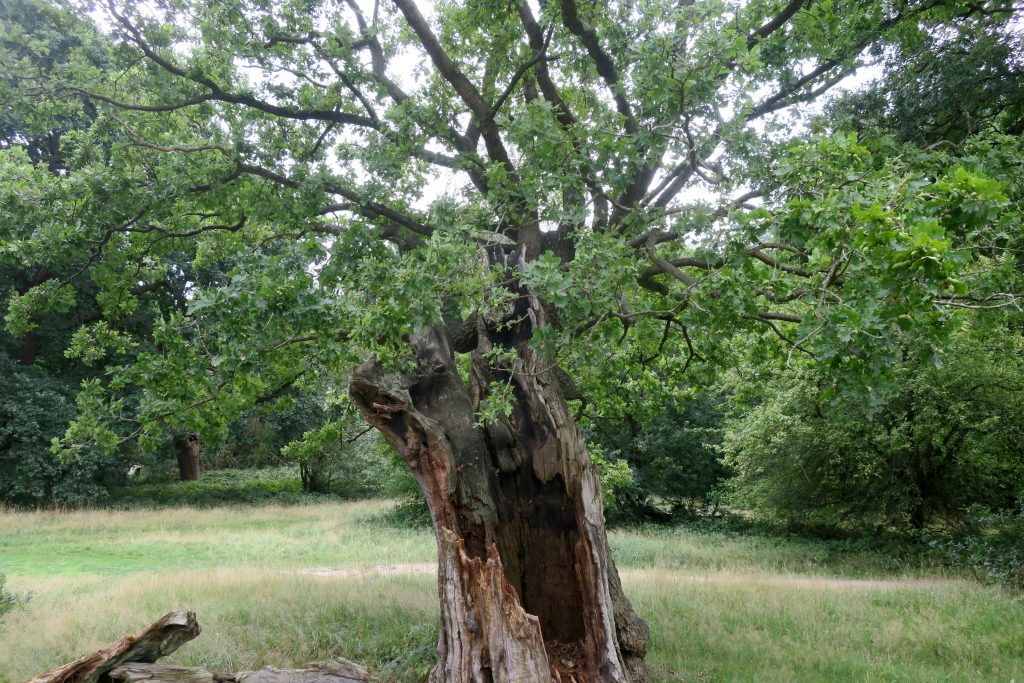
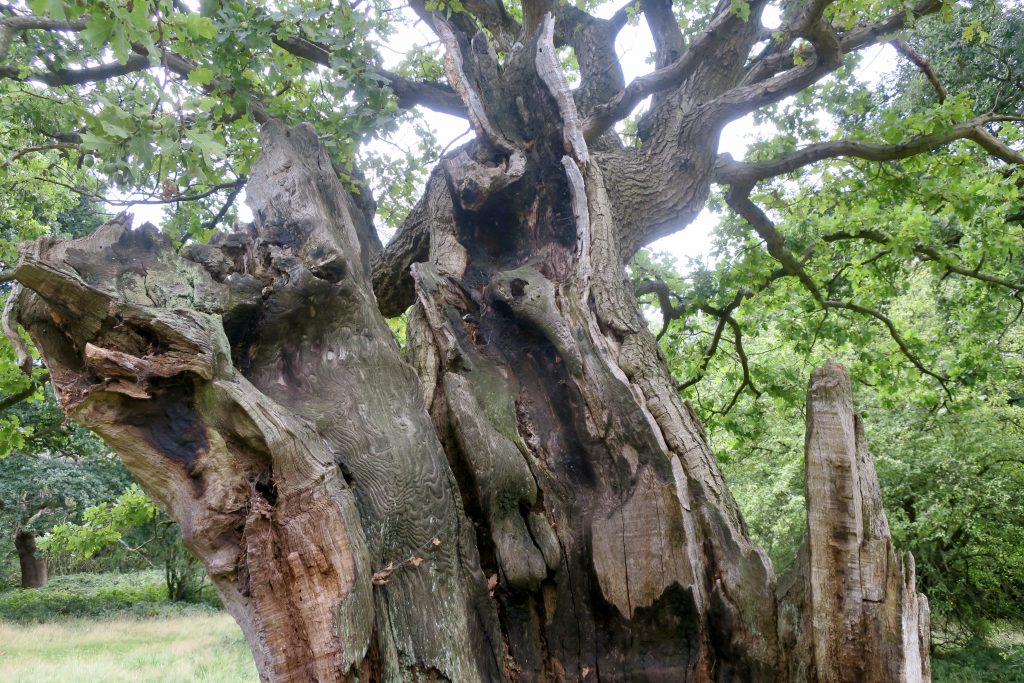
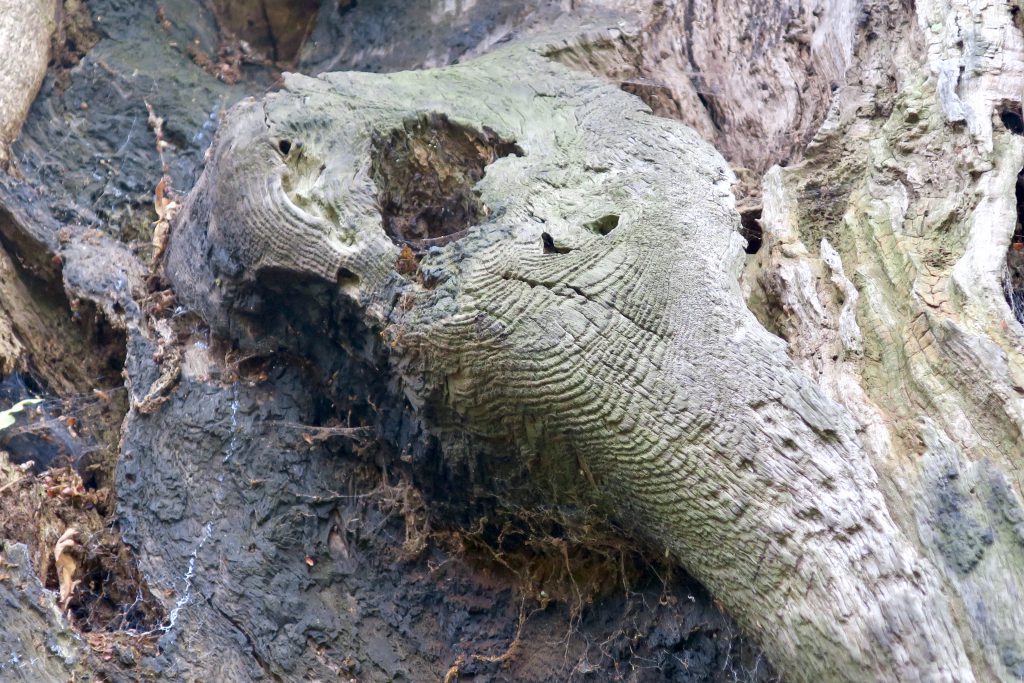
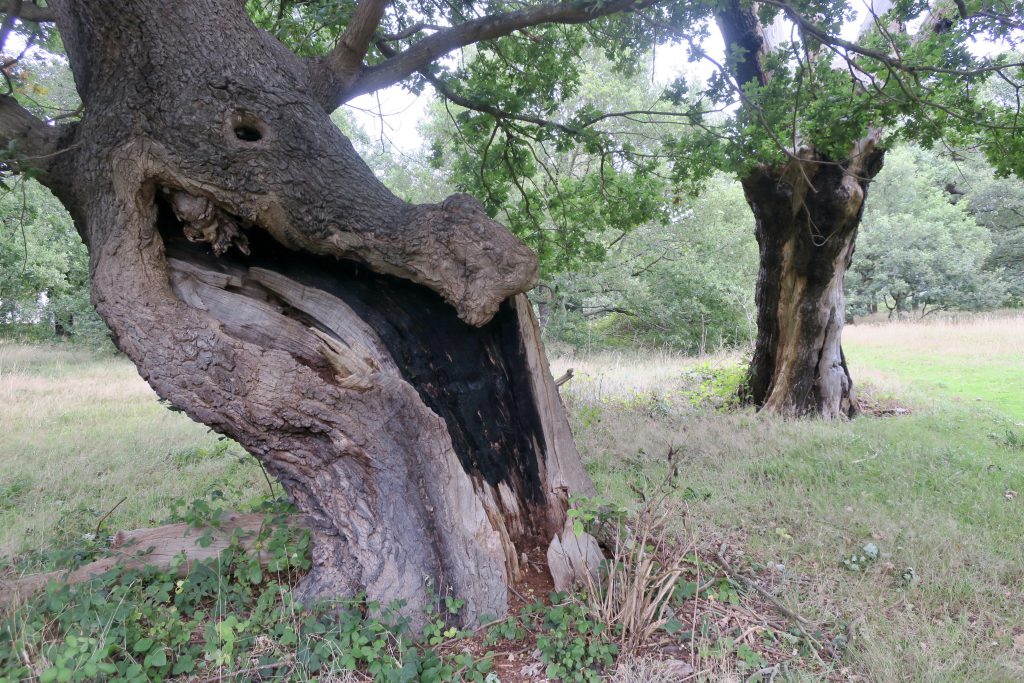
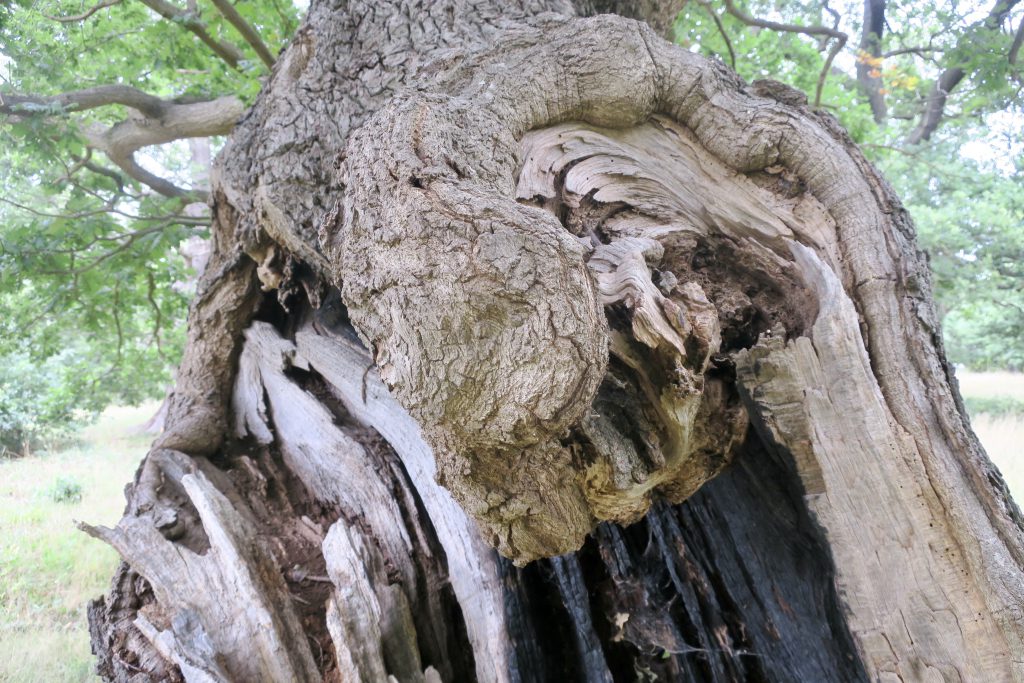
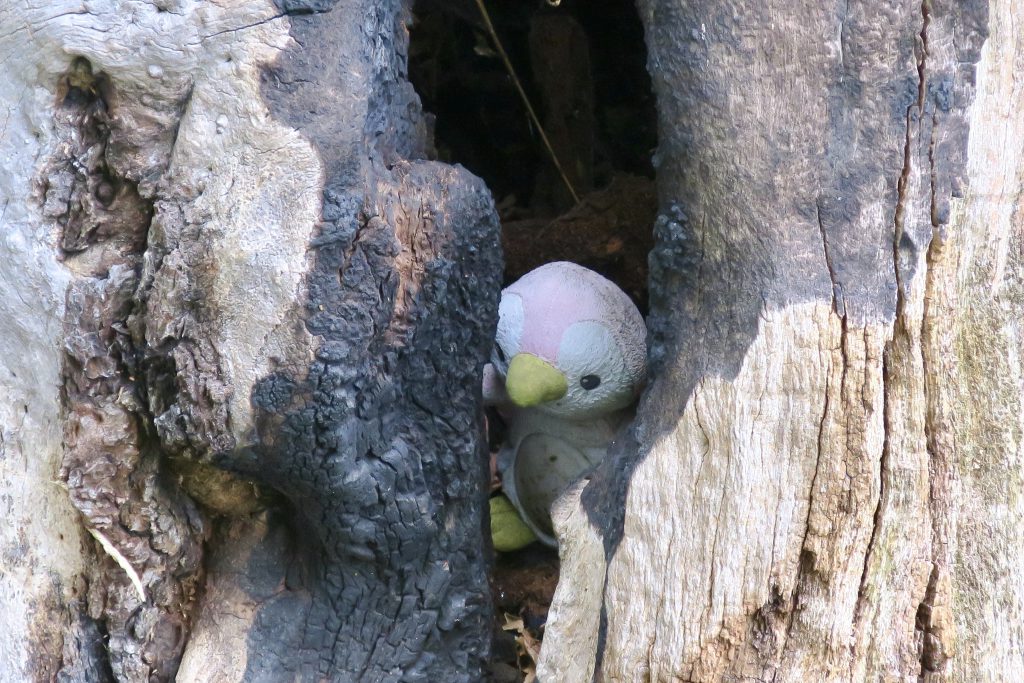
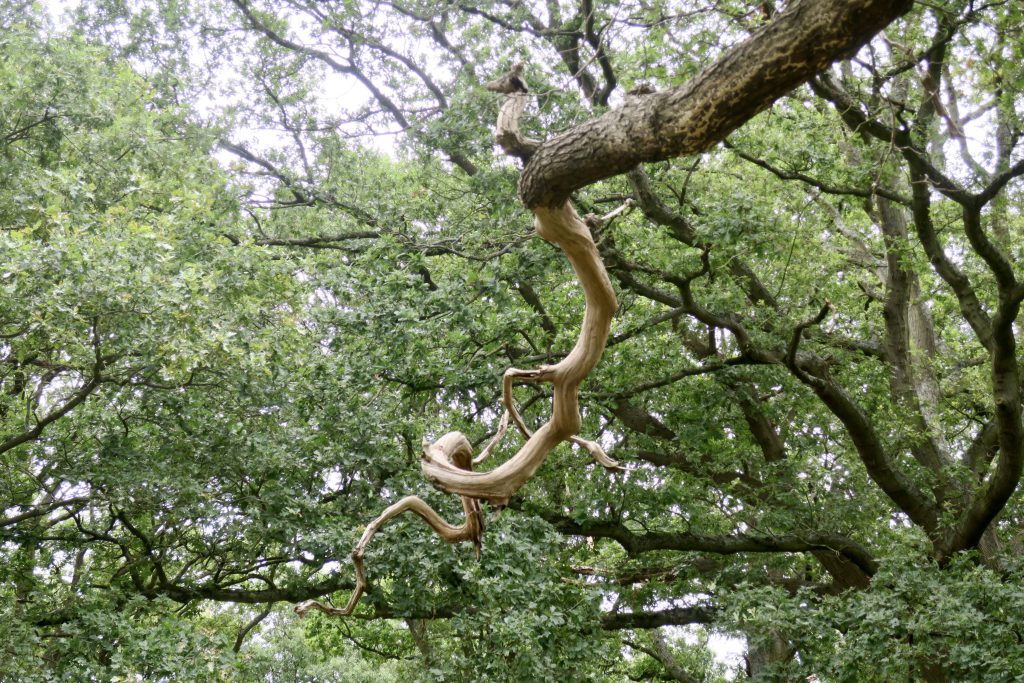
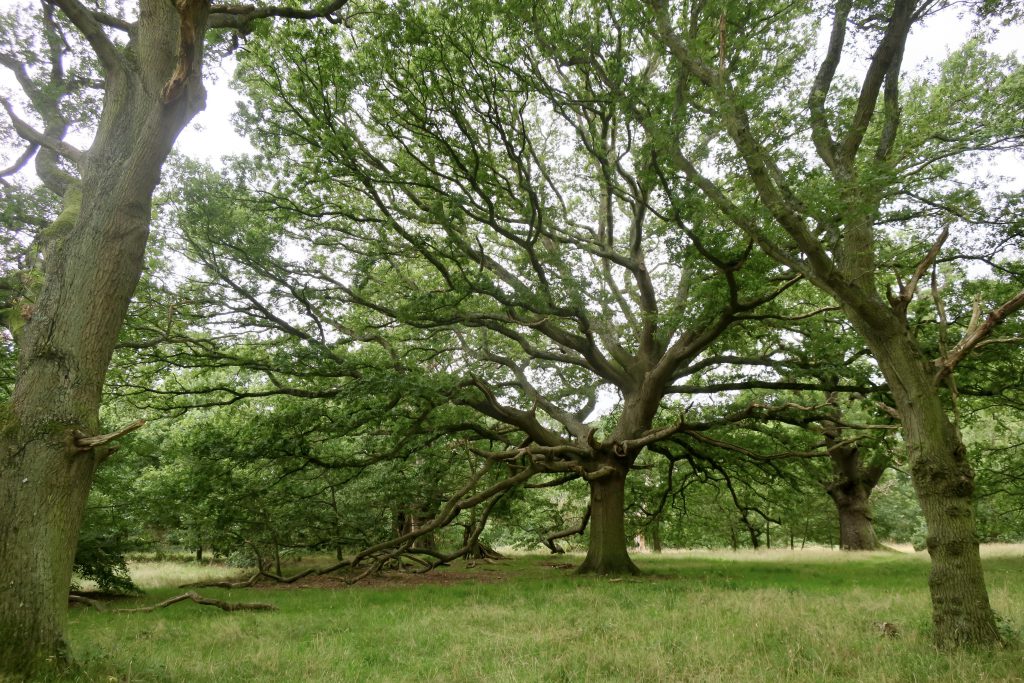
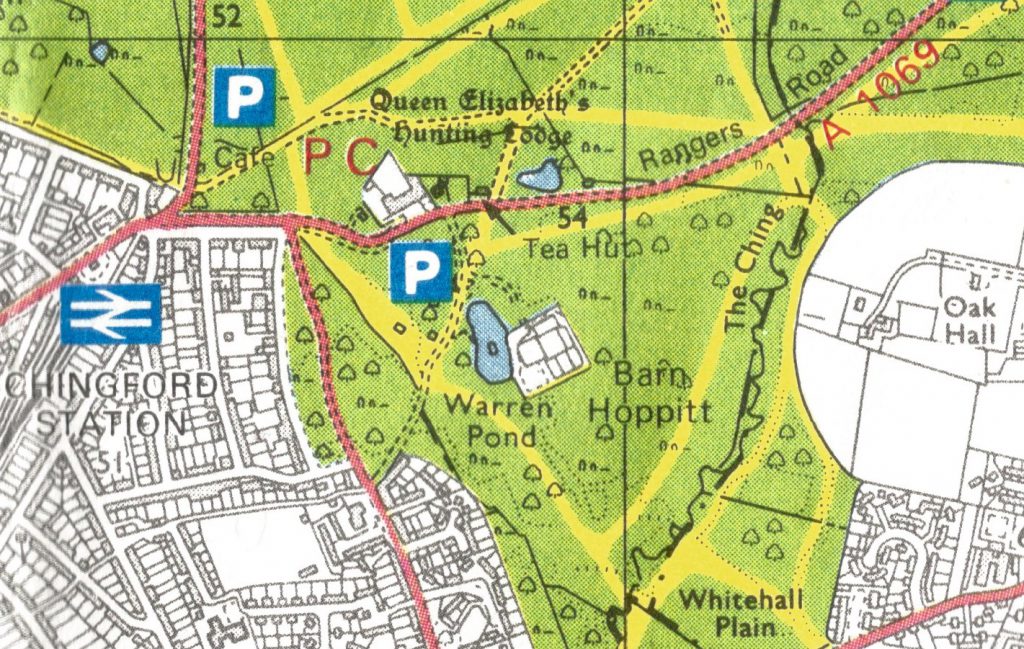
Thank you for a lovely break to hike in the woods, sharing childhood haunts, and the green canopy of love.
I know almost all of those trees “personally” as I was part of a 5 year study to discover the bat species in that “Compartment” of Epping Forest. 4 walked, nighttime, transects a month from March until November and numerous surveys give me a great knowledge of that area and the pollards. Before and after the study it was our go to place and we discovered so many new “ bat facts “ that led the the writing of the first of our two books. Nathusius pippestrells use many of those ancient pollards for their “mating advertisement sites” and also a lot of Noctules do the same. It is a place close to my heart and records show that in the past there was a large roost of Noctules in the hollow tree by Warren Pond.